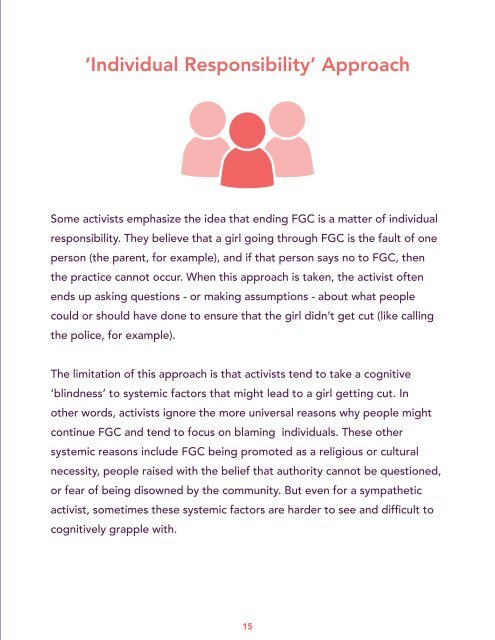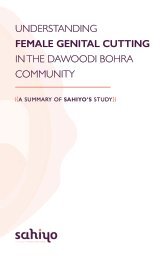Sahiyo Communication Guide
You also want an ePaper? Increase the reach of your titles
YUMPU automatically turns print PDFs into web optimized ePapers that Google loves.
‘Individual Responsibility’ Approach<br />
Some activists emphasize the idea that ending FGC is a matter of individual<br />
responsibility. They believe that a girl going through FGC is the fault of one<br />
person (the parent, for example), and if that person says no to FGC, then<br />
the practice cannot occur. When this approach is taken, the activist often<br />
ends up asking questions - or making assumptions - about what people<br />
could or should have done to ensure that the girl didn’t get cut (like calling<br />
the police, for example).<br />
The limitation of this approach is that activists tend to take a cognitive<br />
‘blindness’ to systemic factors that might lead to a girl getting cut. In<br />
other words, activists ignore the more universal reasons why people might<br />
continue FGC and tend to focus on blaming individuals. These other<br />
systemic reasons include FGC being promoted as a religious or cultural<br />
necessity, people raised with the belief that authority cannot be questioned,<br />
or fear of being disowned by the community. But even for a sympathetic<br />
activist, sometimes these systemic factors are harder to see and difficult to<br />
cognitively grapple with.<br />
15



